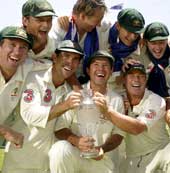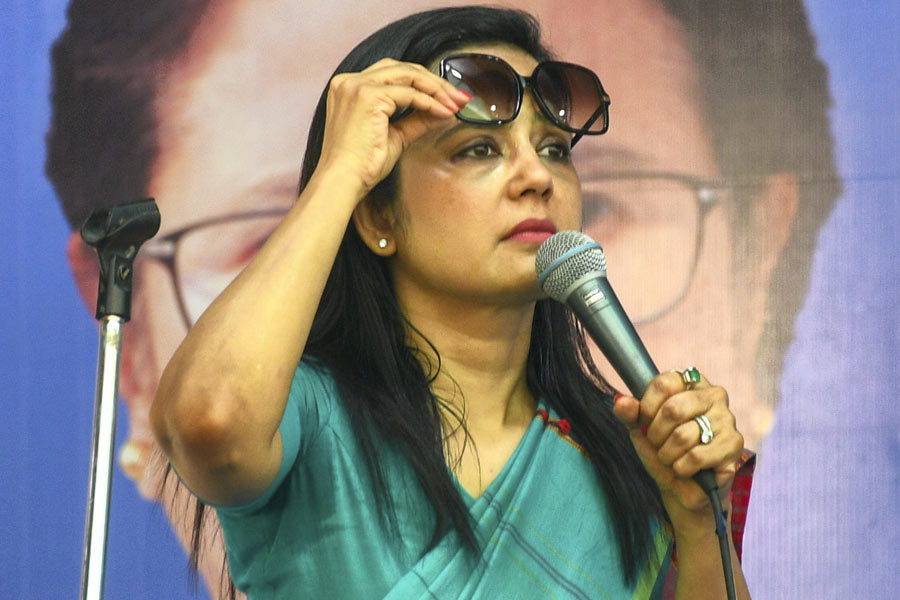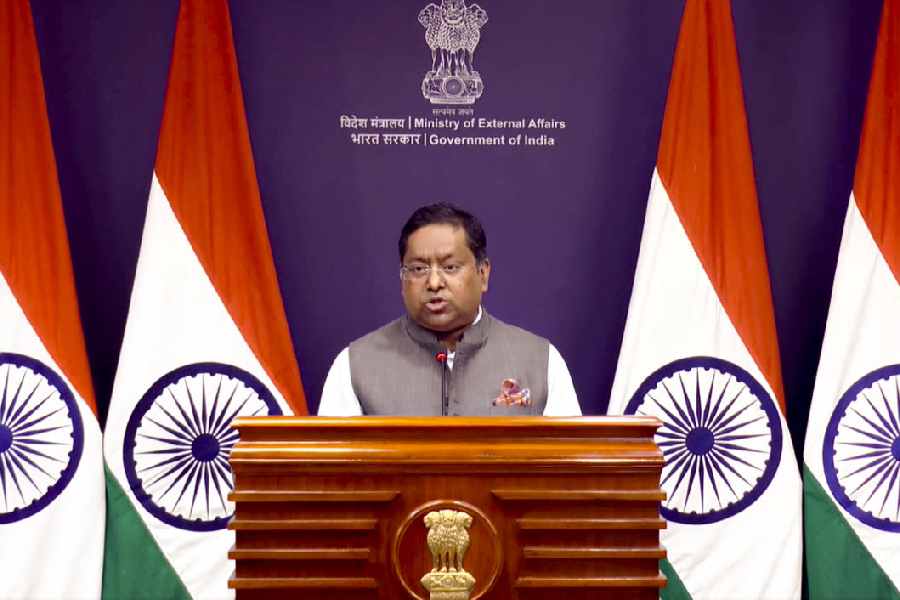|
|
Yesterday, my son, who is fifteen, said: “Last year we had a great team.” I was about to set him right, to say that it was nearly three years ago, in 2004, that we had had something approaching a great team when Ganguly’s Goers had nearly beaten Waugh’s Invincibles in Oz, when he resumed his sentence: “…then Bergkamp and Viera left.” I felt a goose walk over Indian cricket’s grave.
Most of my son’s classmates find greater pleasure in watching Thierry Henry, a Frenchman who captains a London club, Arsenal, than in watching Rahul Dravid turn out for India. The boys in his class who aren’t fixated on Arsenal are obsessed with Manchester United and someone called Rooney who looks worryingly like an Eighties model skinhead. I could be wrong, my sample could be too small, but I think we’re seeing a shift in the sporting culture of metropolitan Indian schoolboys of a particular class. They’re seceding from international cricket and offering their enthusiasm and loyalty to English league football.
Before you go off thinking that my son’s school is some deracinated, air-conditioned NRI heaven, let me assure you that it’s not. Sardar Patel Vidyalaya is an austere, emphatically desi school, with a great cricket tradition. It has produced Indian internationals (Ajay Jadeja, Murali Karthik) and it has one of the most powerful cricket teams amongst Delhi’s schools. Lots of sensible kids in the school aspire to play competitive cricket. So far, so good. But ask any parent with a boy in middle-school and he’ll tell you the same thing: cricket’s reasonably popular, but it isn’t cool.
No, watching Arsenal play Chelsea with your friends is cool. Watching Arsenal play Chelsea wearing the red, obscenely priced Arsenal jersey, is cooler. To fold yourself into Arsenal’s global fan base with a casual ‘we’ is coolest of all, because that’s the very acme of cosmopolitan belonging.
That ‘we’ wouldn’t have been possible till a few years ago, before Star/ESPN began telecasting fixtures live. Recorded matches can seem second-hand because others have watched or used them already. With live telecasts beamed in by satellite, a schoolboy in Delhi can own the action of the match, its suspense, its exhilaration, its heartbreak, in the same way as someone in South Harrow can, because both of them see it happen in real time. Paradoxically, supporting league football is easy because it doesn’t involve treason. It’s not England you’re supporting at football where once you supported India at cricket. No, in cheering for Arsenal, you’re supporting a club-side whose captain is French, and whose players are as likely to come from Cote d’Ivoire as Camden Town.
And why is Arsenal more compelling than India? Two reasons. One, the Indian team isn’t successful enough at cricket to be glamorous. The last ten years of Australian dominance have left the other cricketing nations looking like pygmies squabbling for second place. Two, with the decline of the West Indies and the less-than-competitive presence of Zimbabwe and Bangladesh, international cricket sometimes seems like a small, tawdry, colonial sport, too small and tarnished a mirror to reflect the growing self-consequence of contemporary India’s globalizing elite.
Cricket’s current monopoly of the airwaves is owed to two things. One, its historical popularity in the sub-continent, and two, the fact that it was in better shape than its rival, hockey, when commercial television came calling in the early Nineties. Kapil’s Indians had won the cricket World Cup less than ten years before the sports channels began operating and Indian cricket had in Kapil Dev, Azharuddin and above all, in Tendulkar, champions who could be used to sell anything. Unfortunately for hockey, the introduction of cable television occurred at a time of secular decline, a decline that never plateaued out. Dhanraj Pillay, Indian hockey’s most famous player in the recent past, was a few miles short of being a household name.
Ironically, in the light of the English premier league’s subsequent popularity, India’s domestic football leagues had so little purchase on television’s pan-Indian audience that the sports channels never showed local football on prime-time. Despite the eventful histories of clubs like Mohun Bagan, East Bengal, Leaders Club or Dempo, Arsenal’s ardent young Indian fans wouldn’t know Chuni Goswami from a hole in the ground. This is partly because the standard of football in India is so conspicuously awful compared to television’s non-stop diet of European League games that no one not born into, say, Mohun Bagan’s fan base, would voluntarily join it and learn its lore and partly because the babalog in India’s English-medium schools think of Indian football as a chi-chi game, a lower-class sport manned by plebeian players.
The fact that football in Europe has traditionally been a working-class sport, that Zinedine Zidane represents an immigrant working class for whom soccer represents a way out of France’s urban slums, makes no difference to middle-class Indian schoolboys who watch their stars on television screens without social context or history. The extraordinary celebration of Bhaichung Bhutia, an Indian footballer who was recruited to play for a third division English club, is a forewarning of the enormous enthusiasm that’s likely to be stirred up if one or two Indian players manage to make their way into the upper reaches of European football.
I tell myself that even if my son’s class is representative of India’s great cities, it represents a numerically insignificant demographic. As television-aided cricket reaches more deeply and widely into Indian society, as talent begins to be produced in provincial places (think of Virender Sehwag, Irfan Pathan, Munaf Patel, and Mohammad Kaif), metropolitan towns like Mumbai, Delhi, Bangalore and Chennai become less important as nurseries of talent, and middle-class, urban, English-flaunting children become an insignificant sliver of Indian cricket’s enormous installed fan base.
But I’m not consoled. Our cricketing genes need to reproduce themselves. When our children defect, an unbroken sequence of cricketing generations is severed, a familial cricketing tradition, a silsila, becomes defunct. Less sentimentally, no Indian game can afford to lose the children of the haute salariat, the class of people who buy fridges and washing machines. Once upon a time, Test cricket was one of the white goods that this class consumed reflexively: but for how much longer?











